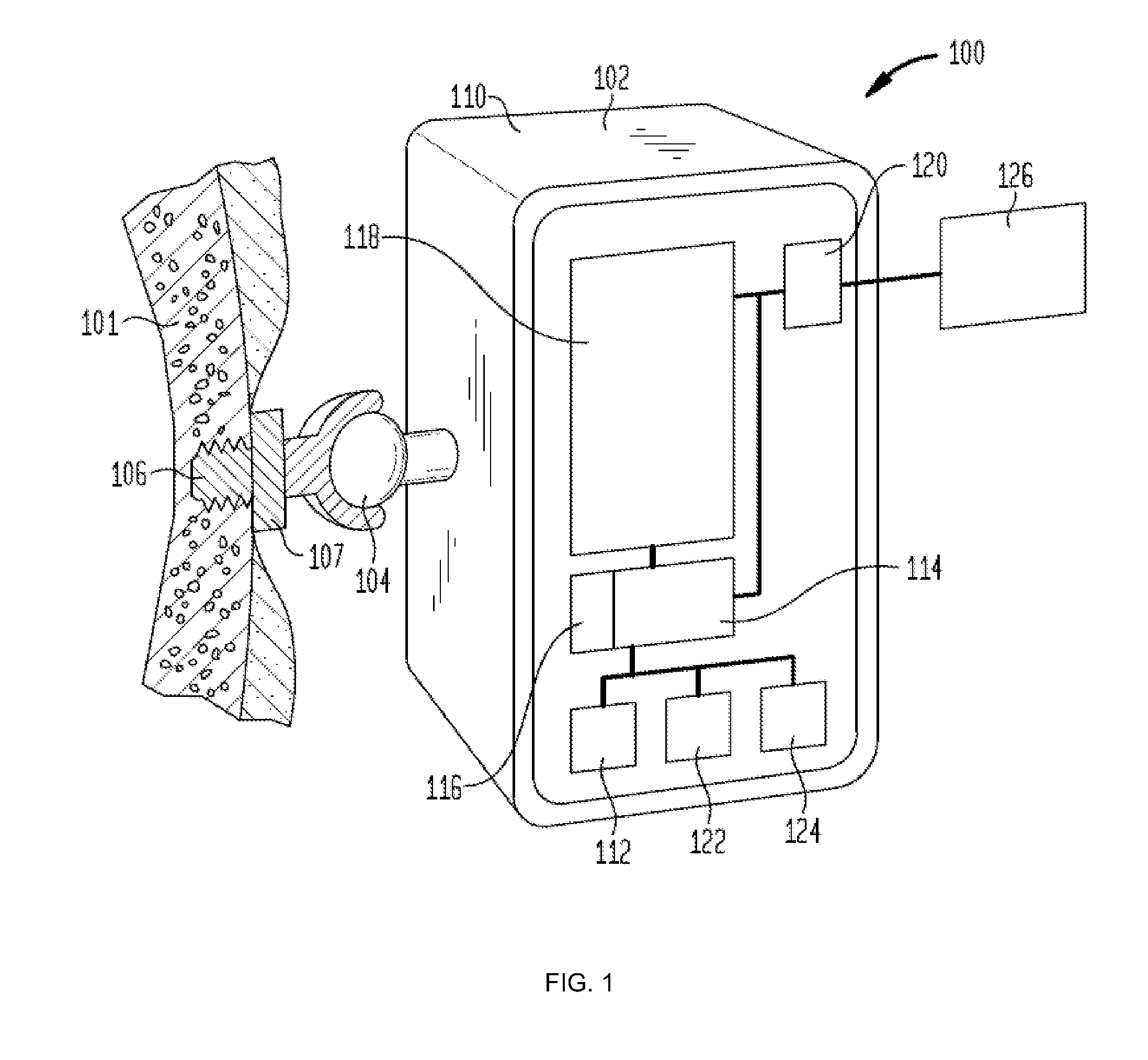Fitting of hearing devices
a technology for hearing devices and fittings, applied in the field of hearing devices, can solve problems such as impeded normal mechanical pathways that provide sound to hair cells in the cochlea, and conductive hearing loss
- Summary
- Abstract
- Description
- Claims
- Application Information
AI Technical Summary
Benefits of technology
Problems solved by technology
Method used
Image
Examples
Embodiment Construction
[0021]Aspects of the present invention are generally directed to fitting a hearing device for a recipient in which the device transmission losses and the recipient hearing losses are separately compensated for, thereby improving the accuracy of the fitting data.
[0022]Specifically, the fitting process includes in-situ measurements of the recipient with the hearing device. An embodiment uses these in-situ measurements to calculate transmission losses in the path sound travels from the hearing device to the recipient. In an embodiment, the transmission losses are calculated by subtracting threshold measurements obtained without the hearing device from in-situ threshold measurements. In use, the hearing device applies gain that separately compensates for the transmission and hearing losses.
[0023]The following description of an embodiment will be discussed with reference to one type of hearing device, a bone conduction device. It should be understood that embodiments of the present inven...
PUM
 Login to View More
Login to View More Abstract
Description
Claims
Application Information
 Login to View More
Login to View More - R&D
- Intellectual Property
- Life Sciences
- Materials
- Tech Scout
- Unparalleled Data Quality
- Higher Quality Content
- 60% Fewer Hallucinations
Browse by: Latest US Patents, China's latest patents, Technical Efficacy Thesaurus, Application Domain, Technology Topic, Popular Technical Reports.
© 2025 PatSnap. All rights reserved.Legal|Privacy policy|Modern Slavery Act Transparency Statement|Sitemap|About US| Contact US: help@patsnap.com



